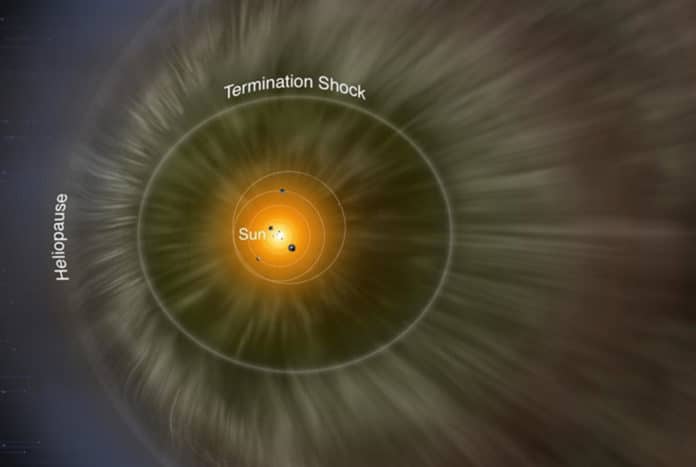The solar wind, which travels from the Sun to all the planets, is impeded by the interstellar medium. This forms a giant bubble around the Sun, and its planets called the heliosphere. The heliosphere is filled with the solar magnetic field and the protons and electrons of the solar wind.
Recently, scientists have mapped the boundary of the heliosphere for the first time. They even have created a three-dimensional map of it. The study could give scientists a better understanding of how solar and interstellar winds interact.
Using data from NASA’s Earth-orbiting Interstellar Boundary Explorer (IBEX) satellite, scientists could map the edge of this zone—a region called the Heliopause. The satellite detects particles from the heliosheath, the boundary layer between the solar system and interstellar space.
In the Heliopause, the solar wind collides with the interstellar wind, pushing towards the Sun.
Then, scientists used a technique similar to how bats use sonar.
Dan Reisenfeld, a scientist at Los Alamos National Laboratory, said, “Just as bats send out sonar pulses in every direction and use the return signal to create a mental map of their surroundings, we used the Sun’s solar wind, which goes out in all directions, to create a map of the heliosphere.”
Scientists did this by using the BEX satellite’s measurement of energetic neutral atoms (ENAs) that result from collisions between solar wind particles and those from the interstellar wind.
Reisenfeld said, “The solar wind ‘signal’ sent out by the Sun varies in strength, forming a unique pattern. IBEX will see that same pattern in the returning ENA signal, two to six years later, depending on ENA energy and the direction IBEX is looking through the heliosphere. This time difference is how we found the distance to the ENA-source region in a particular direction.”
The map shows that the minimum distance from the Sun to the Heliopause is about 120 AU in the direction facing the interstellar wind. In the opposite direction, it extends at least 350 AU, which is the distance limit of the sounding technique.
Journal Reference:
- Daniel B. Reisenfeld et al., A Three-dimensional Map of the Heliosphere from IBEX, The Astrophysical Journal Supplement Series (2021). DOI: 10.3847/1538-4365/abf658
